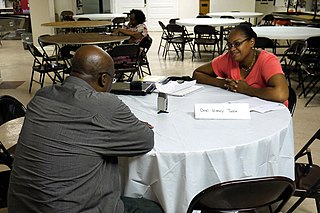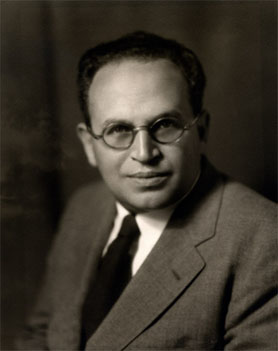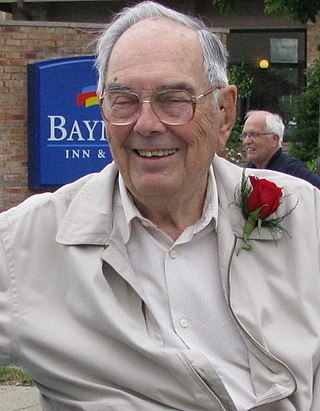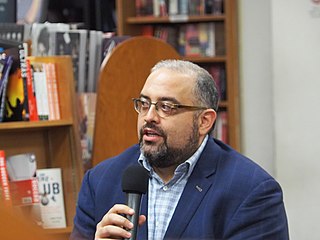Related Research Articles

Oral history is the collection and study of historical information from people, families, important events, or everyday life using audiotapes, videotapes, or transcriptions of planned interviews. These interviews are conducted with people who participated in or observed past events and whose memories and perceptions of these are to be preserved as an aural record for future generations. Oral history strives to obtain information from different perspectives and most of these cannot be found in written sources. Oral history also refers to information gathered in this manner and to a written work based on such data, often preserved in archives and large libraries. Knowledge presented by oral history is unique in that it shares the tacit perspective, thoughts, opinions and understanding of the interviewee in its primary form.
The Ford Foundation is an American private foundation with the stated goal of advancing human welfare. Created in 1936 by Edsel Ford and his father Henry Ford, it was originally funded by a $25,000 gift from Edsel Ford. By 1947, after the death of the two founders, the foundation owned 90% of the non-voting shares of the Ford Motor Company. Between 1955 and 1974, the foundation sold its Ford Motor Company holdings and now plays no role in the automobile company.
The Graduate School and University Center of the City University of New York is a public research institution and postgraduate university in New York City. Formed in 1961 as Division of Graduate Studies at City University of New York, it was renamed to Graduate School and University Center in 1969. Serving as the principal doctorate-granting institution of the City University of New York (CUNY) system, CUNY Graduate Center is classified among "R1: Doctoral Universities – Very High Research Activity".

Paul Felix Lazarsfeld was an Austrian-American sociologist and mathematician. The founder of Columbia University's Bureau of Applied Social Research, he exerted influence over the techniques and the organization of social research. "It is not so much that he was an American sociologist," one colleague said of him after his death, "as it was that he determined what American sociology would be." Lazarsfeld said that his goal was "to produce Paul Lazarsfelds". He was a founding figure in 20th-century empirical sociology.
Peter Shawn Bearman is an American sociologist, notable for his contributions to the fields of adolescent health, research design, structural analysis, textual analysis, oral history and social networks. He is the Jonathan R. Cole Professor of Social Science in the Department of Sociology at Columbia University, the President of The American Assembly at Columbia University, as well as the director of the Interdisciplinary Center for Innovative Theory and Empirics (INCITE). He is also the founding director of the Institute for Social and Economic Research and Policy, and co-founding director of Columbia's Oral History Master of Arts Program, the first oral history masters program in the country. He was elected a Fellow of the American Academy of Arts and Sciences in 2008, a member of the National Academy of Sciences in 2014, a Guggenheim Fellow in 2016, and a member of the National Academy of Medicine in 2019.

Russell G. Mawby was an American academic and philanthropist who served as chairman emeritus of the W.K. Kellogg Foundation. He led the W.K. Kellogg Foundation for 25 years, during which he was credited for creativity in programming by providing opportunities for youth and leadership in the field.
The American Assembly was a think tank at Columbia University, founded in 1950 by General Dwight Eisenhower. It was his most enduring achievement and legacy as president of Columbia, though some, such as his successor as President of Columbia University, Grayson Kirk, believed that the idea was "naive" and "extremely simplistic."

The Pembroke Center for Teaching and Research on Women is an interdisciplinary research center focused on gender and women at Brown University, Providence, Rhode Island. It was established in 1981. In addition to research, the center is home to archives of feminist theory and women's history as well as Brown's undergraduate Gender and Sexuality Studies concentration. Postcolonial theorist Leela Gandhi, is the Center's director, having assumed the position in July 2021.

The Rare Book and Manuscript Library is principal repository for special collections of Columbia University. Located in New York City on the university's Morningside Heights campus, its collections span more than 4,000 years, from early Mesopotamia to the present day, and span a variety of formats: cuneiform tablets, papyri, and ostraca, medieval and Renaissance manuscripts, early printed books, works of art, posters, photographs, realia, sound and moving image recordings, and born-digital archives. Areas of collecting emphasis include American history, Russian and East European émigré history and culture, Columbia University history, comics and cartoons, philanthropy and social reform, the history of mathematics, human rights advocacy, Hebraica and Judaica, Latino arts and activism, literature and publishing, medieval and Renaissance manuscripts, oral history, performing arts, and printing history and the book arts.
Stanford University has many centers and institutes dedicated to the study of various specific topics. These centers and institutes may be within a department, within a school but across departments, an independent laboratory, institute or center reporting directly to the dean of research and outside any school, or semi-independent of the university itself.

The Archives of American Art is the largest collection of primary resources documenting the history of the visual arts in the United States. More than 20 million items of original material are housed in the Archives' research centers in Washington, D.C., and New York City.

Bloomberg Philanthropies is a philanthropic organization that encompasses all of the charitable giving of founder Michael R. Bloomberg. Headquartered in New York City, Bloomberg Philanthropies focuses its resources on five areas: the environment, public health, the arts, government innovation and education. According to the Foundation Center, Bloomberg Philanthropies was the 10th largest foundation in the United States in 2015, the last year for which data was available. Bloomberg has pledged to donate the majority of his wealth, currently estimated at more than $54 billion. Patti Harris is the CEO of Bloomberg Philanthropies.

The Baylor University Institute for Oral History (BUIOH), located in Waco, Texas, is a freestanding research department within Baylor University's Division of Academic Affairs. The BUIOH creates oral history memoirs by preserving an audio recording and transcript of interviews with individuals who are eyewitnesses to history; it provides both physical and digital access to these materials for those interested in the stories. The BUIOH is a sponsoring member of the Oral History Association (OHA), hosts the Texas Oral History Association (TOHA), participates in H-Oralhist and is active in the International Oral History Association (IOHA).

The Samuel Proctor Oral History Program (SPOHP) is the official oral history program at the University of Florida. With over 6,500 interviews and more than 150,000 pages of transcribed material, it is one of the premier oral history programs in the United States. SPOHP's mission is "to gather, preserve, and promote living histories of individuals from all walks of life." The program involves staff, undergraduate and graduate students, and community volunteers in its operation.
Wendy Susan Schmidt is an American businesswoman and philanthropist. She is the wife of Eric Schmidt, the former CEO of Google, whom she met in graduate school at the University of California, Berkeley.
Arnold Ventures LLC is a limited liability company focused on evidence-based philanthropy in a wide range of areas including criminal justice, education, health care, and public finance. The organization was founded by billionaires John D. Arnold and Laura Arnold in 2008.
William Lazonick is an economist who studies innovation and competition in the global economy.

Shamus Rahman Khan is an American sociologist. He is a professor of sociology and American studies at Princeton University. Formerly he served as chair of the sociology department at Columbia University. He writes on elites, inequality, gender/sexuality, and American culture. His work has appeared in numerous national and international media outlets.
Open Philanthropy is a research and grantmaking foundation that makes grants based on the principles of effective altruism. It was founded as a partnership between GiveWell and Good Ventures. Its current chief executive officer is Alexander Berger, and its main funders are Cari Tuna and Dustin Moskovitz. Moskovitz says that their wealth, worth $16 billion, "belongs to the world. We intend not to have much when we die."
The John Templeton Foundation is a philanthropic organization founded by John Templeton in 1987. Templeton became wealthy as a contrarian investor, and wanted to support progress in religious and spiritual knowledge, especially at the intersection of religion and science. He also sought to fund research on methods to promote and develop moral character, intelligence, and creativity in people, and to promote free markets. In 2008, the foundation was awarded the National Humanities Medal. In 2016, Inside Philanthropy called it "the oddest—or most interesting—big foundation around."
References
- 1 2 Sharma, Patrick. "Oral History, Policy History, and Information Abundance and Scarcity". Perspectives on History. American Historical Society. Retrieved 6 December 2014.
- ↑ "Columbia University-Oral History Research Office". LibraryThing. LibraryThing. Retrieved 6 December 2014.
- 1 2 3 Coe, Natalie; Furl, Jennifer. "Mary Marshall Clark, Director, Columbia University Oral History Research Office: The Oral History of 9/11". Philanthropy News Digest. Foundation Center. Retrieved 7 December 2014.
- ↑ "Columbia Center for Oral History Research". Interdisciplinary Center for Innovative Theory and Empirics. Columbia University. Retrieved 6 December 2014.
- ↑ "Phoenix House Oral History Project". Interdisciplinary Center for Innovative Theory and Empirics. Columbia University. Archived from the original on 2014-12-10. Retrieved 8 December 2014.
- ↑ "Atlantic Philanthropies Oral History Project". Interdisciplinary Center for Innovative Theory and Empirics. Columbia University. Retrieved 8 December 2014.[ permanent dead link ]
- ↑ "Institute for Research on Women, Gender, and Sexuality Oral History Project". Interdisciplinary Center for Innovative Theory and Empirics. Columbia University. Archived from the original on 2014-12-08. Retrieved 8 December 2014.
- ↑ "The Robert Rauschenberg Oral History Project". Interdisciplinary Center for Innovative Theory and Empirics. Columbia University. Archived from the original on 2014-12-08. Retrieved 8 December 2014.
- ↑ "Apollo Theater Oral History Project". Oral History Archives. Columbia University. Archived from the original on 2014-12-08. Retrieved 6 December 2014.
- ↑ "Carnegie Corporation Oral History Project". Oral History Archives. Columbia University. Archived from the original on 2014-12-14. Retrieved 6 December 2014.
- ↑ "Rule of Law Oral History Project". Oral History Archives. Columbia University. Archived from the original on 2014-12-14. Retrieved 8 December 2014.
- 1 2 3 4 5 6 "September 11, 2001 Oral History Research Projects". Oral History Archives. Columbia University. Archived from the original on 2014-11-23. Retrieved 7 December 2014.